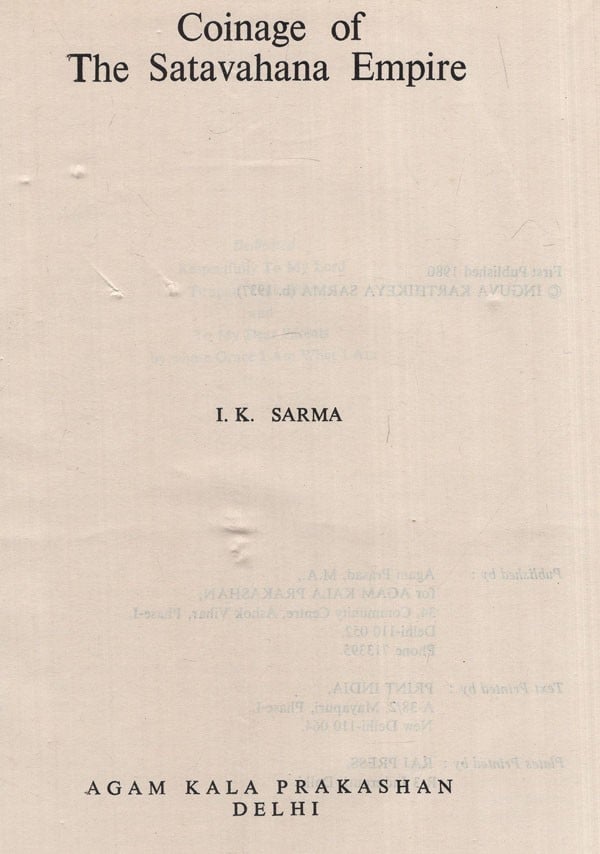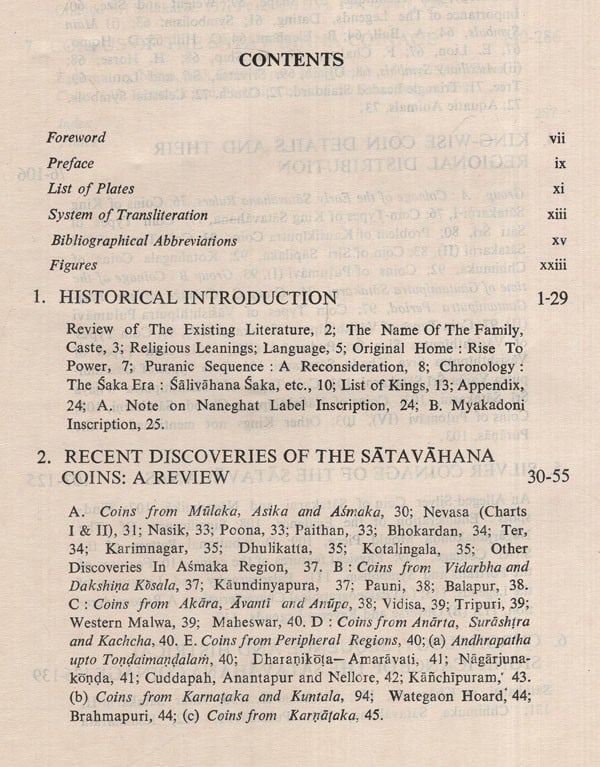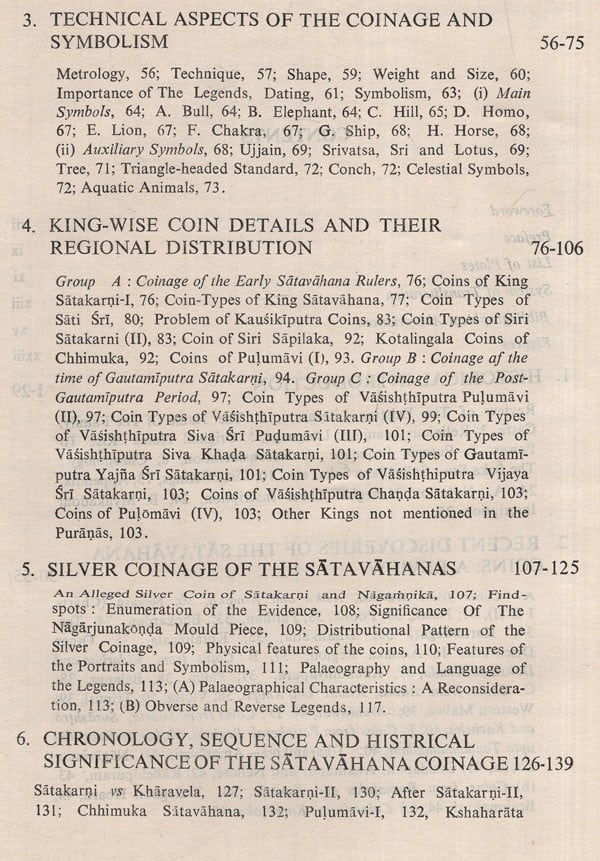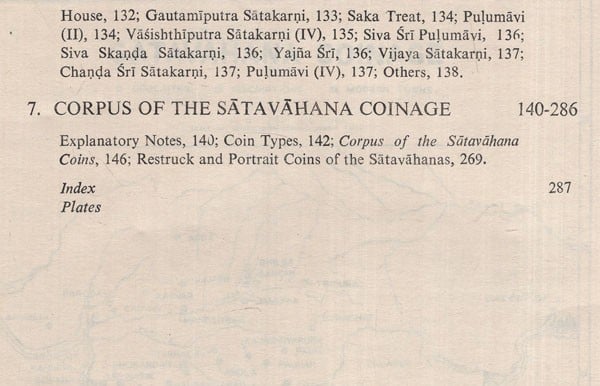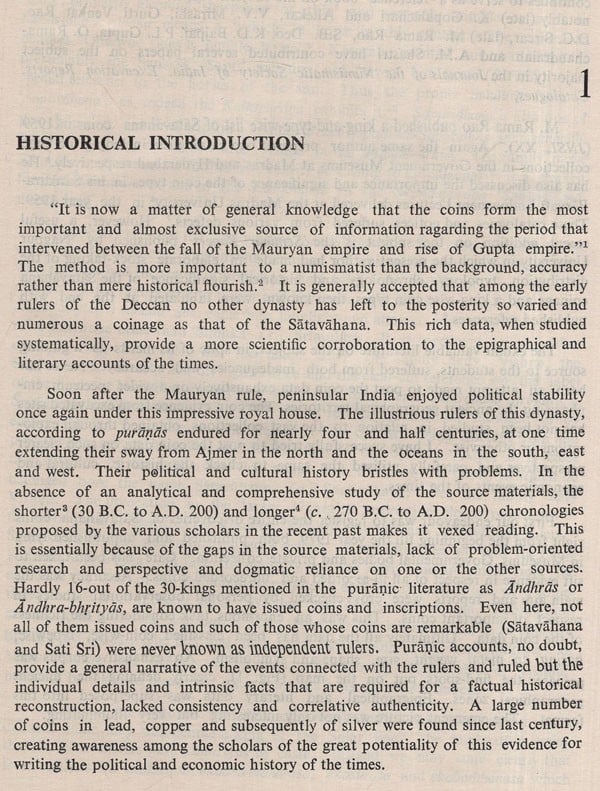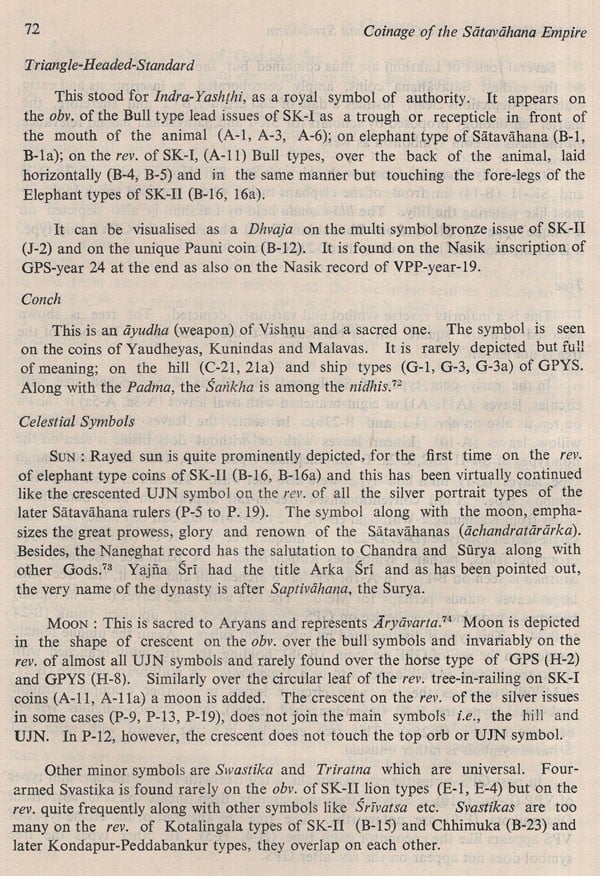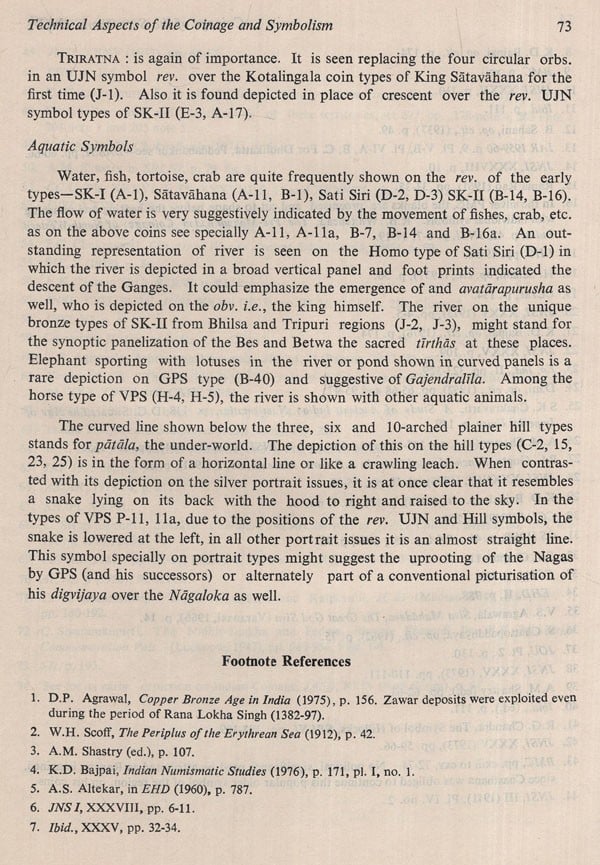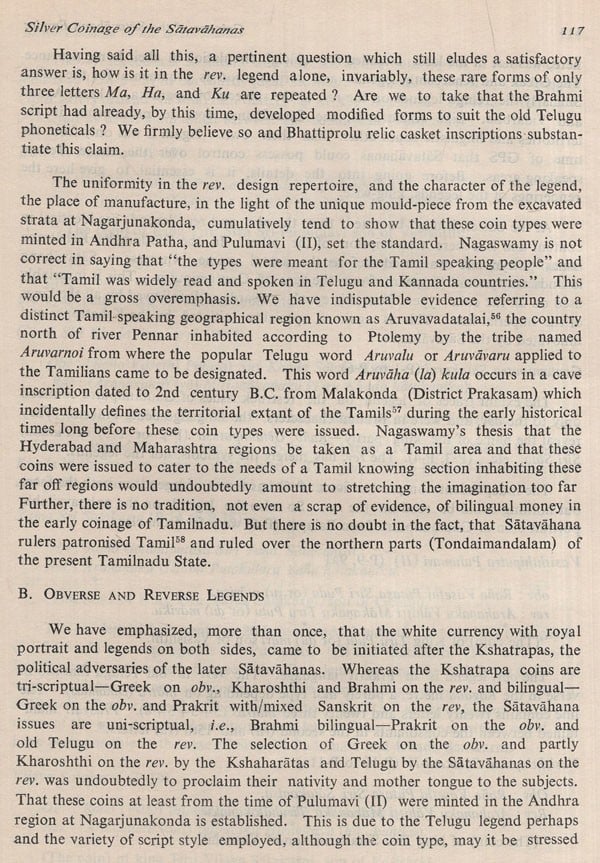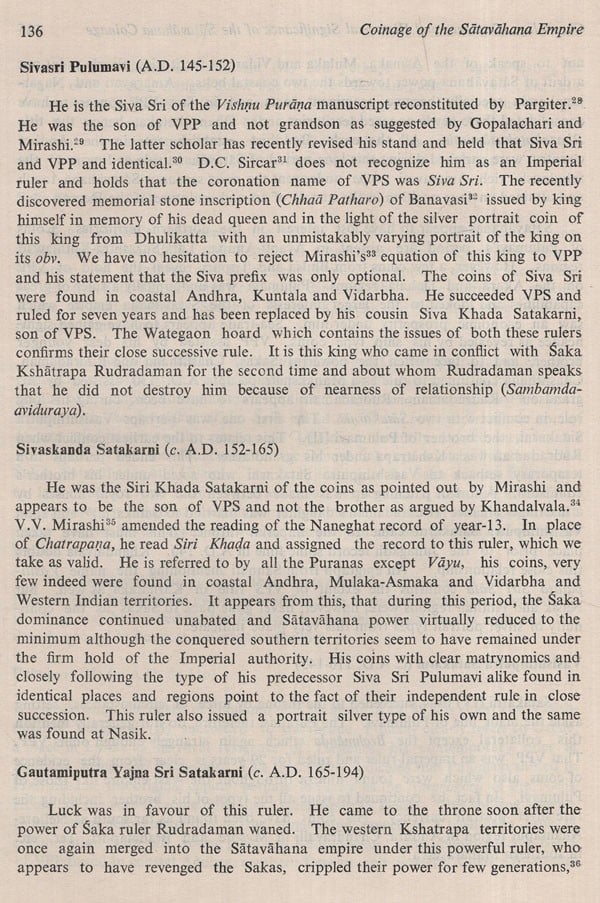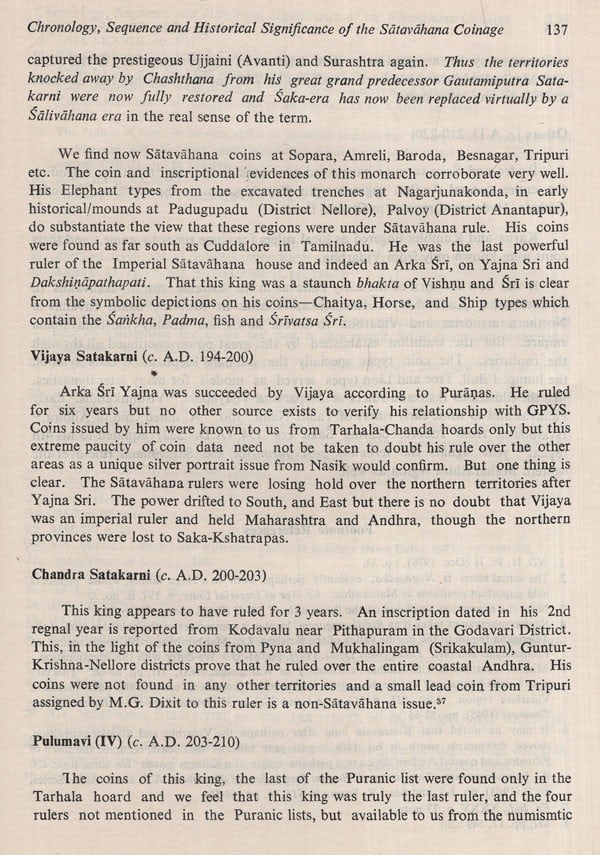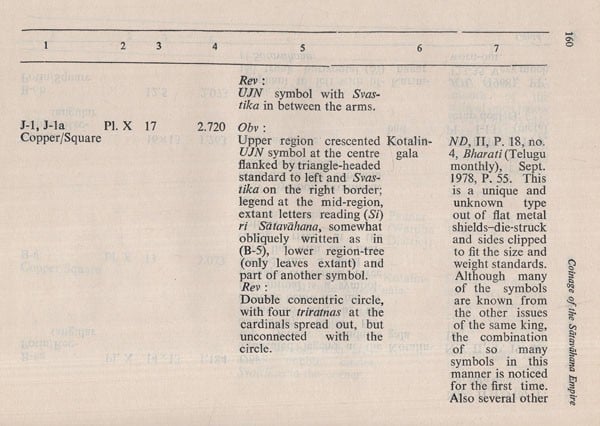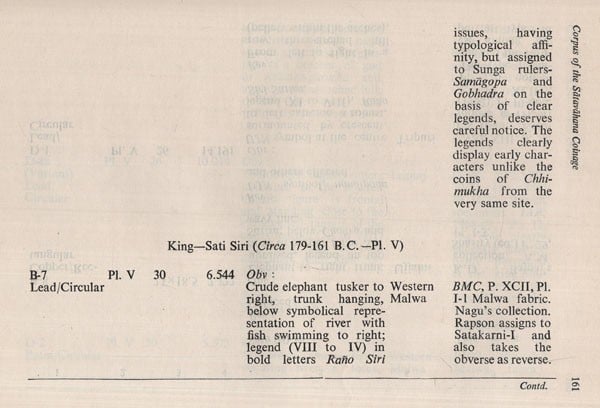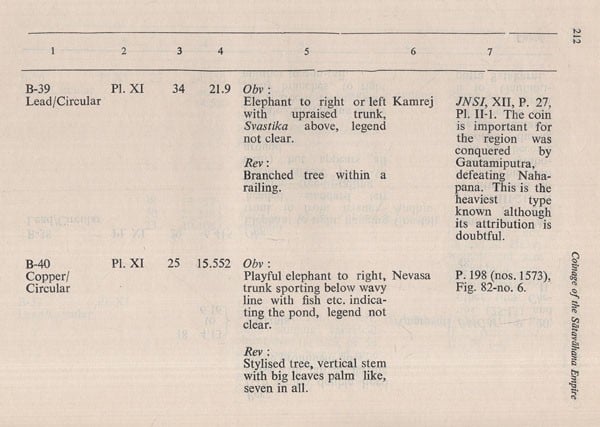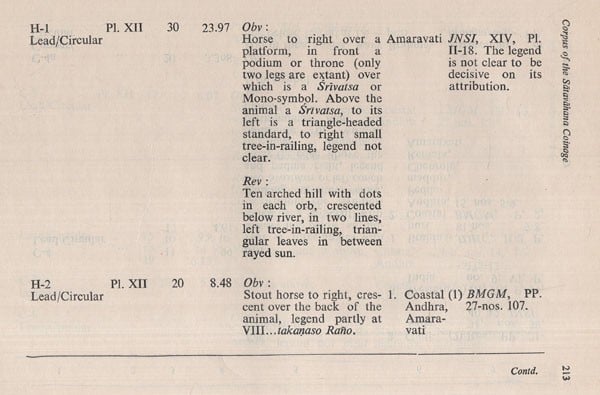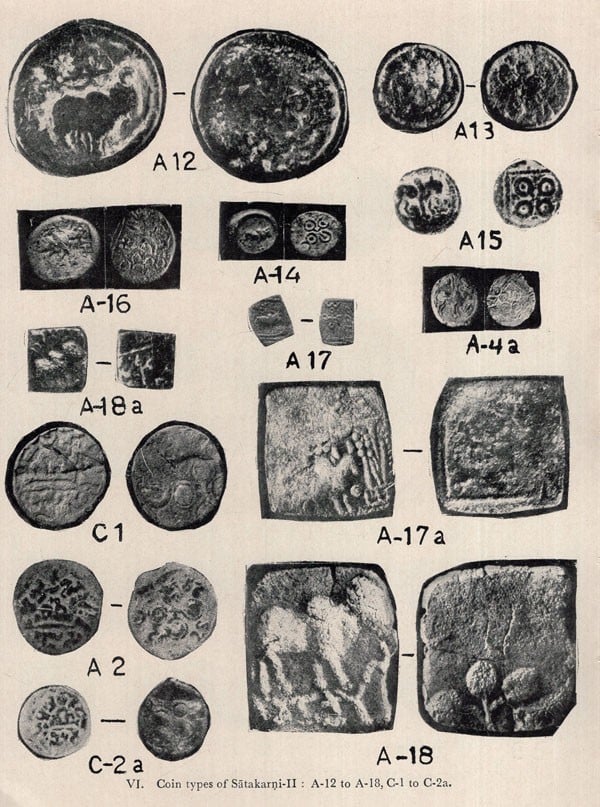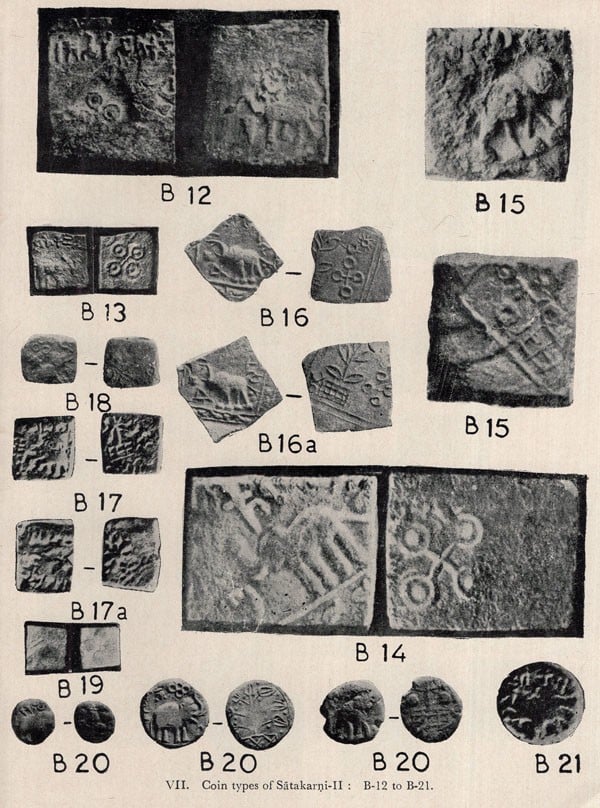
Coinage of The Satavahana Empire (An Old and Rare Book)
Book Specification
| Item Code: | UAS473 |
| Author: | I.K Sarma |
| Publisher: | Agam Kala Prakashan, Delhi |
| Language: | English |
| Edition: | 1980 |
| Pages: | 334 (Throughout B/w Illustrations) |
| Cover: | HARDCOVER |
| Other Details | 10.00 X 7.50 inch |
| Weight | 630 gm |
Book Description
After the Mauryans, peninsular Indian enjoyed political stability under yet another impressive royal house viz, the Satavahanas whose contribution to the Indian civilization is enormous in all spheres. They were the earliest imperial power to issue inscribed coinage with legends containing the names of the rulers, yet no comprehensive study of the vast coin collections was undertaken so far. The present work of Sri Sarma fills this void and, for the first time, sets a model for similar dynasty-wise numismatic studies based on distributional pattern of the coinage in their ancient geographical set up. A reliable sequence and chronological framework was prepared after sifting various literary and traditional accounts. The epigraphical wealth of the dynasty was also utilized to cross-check the numismatic data. A critical analysis of the internal evidence afforded by the coins such as technique of manufacture, metrology, symbolism and legends was undertaken and the entire date is systematically presented.
A model corpus incorporates all the known coins finds till date (1979). In this study Sri Sarma has brought to light several hitherto unknown coin types, especially among the silver portrait issues and has assigned them with certainty. The present study would certainty serve as a model for the study of Satavahana history and numismatics.
INGUVAKARTHIKEYA SARMA (born 1937), is presently heading the Temple Survey (South), of the Archaeological Survey of India, Madras He obtained his Master's degree from the Nagpur University and was awarded the Motilal Nehru Centenary Prize for the topmost position in Ancient Indian History, Culture and Archaeology. He holds a Post Graduate Diploma in Archaeology from the School of Archaeology, New Delhi.
After an initial training in Field Archaeology. he joined the Archaeological survey of (1958) and Since then was actively associated with its major excavations at Nagarjunakonda, Pauni, Paiyampalli and Surkotda. He has directed the excavations at Gudimallam and Amaravati. His Village-to-village survey in Kurnool and Cuddapah Districts have added a new chapter to the protohistoric Studies of South India His Comprehensive report on the Antiquarian Remains in the Submersible Areas under the Srisailam Hydro-Electric Project has led to a massive salvage programme aimed at the transplantation of standing monuments and excavations of archaeological site in Kurnool and Mahboobnagar districts of Andhra Pradesh on an unprecedented scale.
He has published so far 50-papers and reports in various journals and excavation reports. His fields of specialization include protohistoric and historical Archaeology. numismatics, epigraphy and art & architecture. He has served as the Regional Co-ordinator for the "Dictionary of Indian Archaeology Project" under the direction of Sri A Ghosh, former Director General, Archaeological Survey of India and his contributed several articles. He is on the Executive Committee of the Epigraphical Society of India and Andhra Pradesh History Congress etc. His Other Works are The Siva Temple at Gudimallam", "Acharya Nagarjuna' (in Telugu).
The numismatic evidence had singularly been a great source to contribute for the reconstruction of Satavahana history than to that of any other dynasty in ancient India. I was initiated into the study of the 'Coinage of the Satavahanas by sor S.B. Deo when the Nagpur University played host for the 59th Annual Session of the Numismatic Society of India in the year 1970. A special seminar on the subject was held in which I had been asked to present a key paper. This has since been published in A.M. Shastry (ed.), Nagpur, 1972, pp. 75-100. Among the learned participants Mahamahopadhyaya V.V. Mirashi, Professors K.D. Bajpai and A.K. Narain and my teachers Drs. S.B. Deo and A.M. Shastry of the Nagpur University. have evinced keen interest and advised me to study the subject more exhaustively. Since then, my researches in this line progressed, no doubt, on a snail's pace, and resulted in the publication of a few more papers. However, the chronology adopted in this work has undergone certain medifications and differs in some finer detail from my earlier articles on the subjects,
In the year 1976 1 approached the ICHR, New Delhi for a study grant. The authorities of the ICHR very kindly helped me to undertake spot study and obtain photographs of the various collections which is very necessary for a study of this sort. But for the ready financial assistance of the ICHR, this study could not have been possibly planned at all. The ICHR is, however, not responsible for the facts and conclusions stated in this work.
During my study trips, many learned Institutes and individuals extended helping hand and placed their data at my disposal. I cannot adequately express my deep sense of gratitude to each one of them individually but crave their indulgence to treat this work as a humble contribution to the subject, so dear to them.
However, I am particularly beholden to Drs. S.B. Deo and Mrs. Sobhana Gokhale of the Deccan College: Prof. K.D. Bajpai of Sagar University, Dr. A.M. Shastry of the Nagpur University, Dr. R. Subrahmanyam of the Nagarjuna University for their scholarly guidance. Prof. Gurty Venkat Rao, Dr. Nelaturi Venkatara manayya and Dr. Oruganti Ramachandraiah distinguished professors of History, in spite of their old age and preoccupations, spared many occasions to discuss, shared their erudition on the subject and evinced keen interest in the completion of this work. My respectful regards to all those savants. I very much regret that my work could not see the light before the sad demise of Dr. Nelaturi Venkatarama nayya whose affection towards me and my researches knew no bounds.
I take it a privilege and an honour to contribute a Foreword to the monograph on the Coinage of the Satavahana Empire by Sri I.K. Sarma of the Archaeological Survey of India.
I have had the pleasure of knowing Sri Sarma for the last several years, especially when he was a post-graduate student and research scholar at the Nagpur University and subsequently at the Poona University. Even as a post-graduate student he had remarkable clarity of thought and meticulous method of presenting his views on controversial problems of Indian Archaeology.
As is known to all scholars of Indian History, the Satavahanas have been a controversial dynasty. The origin, the name, the number of kings, the names of kings and even the assignment of coins to specific kings of the dynasty have been a matter of debate for the last several decades in India. It is but characteristic of Sri I.K. Sarma to undertake a study of such a controversial aspect of the Satavahanas viz. the coins. The inscriptions and the coins are the only two sources of this dynasty, apart from literary references. Sri L.K. Sarma has consulted practically all the published sources on the coinage of the Satavahanas and given us a very exhaustive monograph. All may not agree with the chronology proposed by Sri Sarma but most of the scholars are inclined to assign earlier dates to the Satavahana dynasty rather than 1st century B.C. Sri Sarma has taken into consideration the different views in this matter and proposed a new scheme for the chronology of this dynasty.
It is but natural that the views expressed may evoke a debate amongst the scholars and I feel that Sri Sarma would welcome it. In any case this is the first exhaustive survey of the numismatic data of one of the most important dynasties associated with the Deccan. Such dynastic studies are most welcome because they help in undertaking similar studies in respect of other dynasties who were contemporary or who had matrimonial and political relations with each other.
**Contents and Sample Pages**
